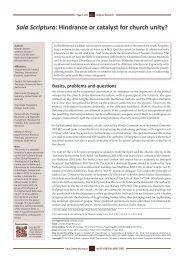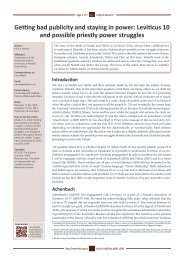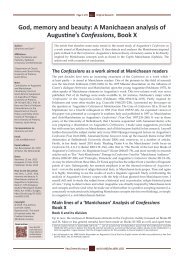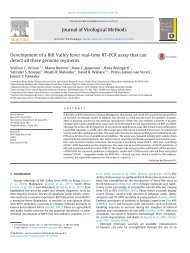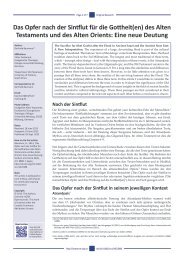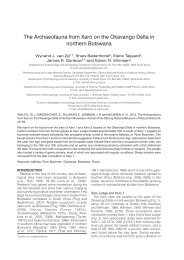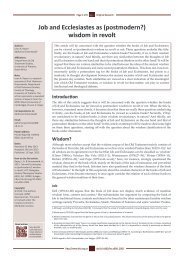View/Open - University of Pretoria
View/Open - University of Pretoria
View/Open - University of Pretoria
You also want an ePaper? Increase the reach of your titles
YUMPU automatically turns print PDFs into web optimized ePapers that Google loves.
were already familiar with the design <strong>of</strong> a test <strong>of</strong> this nature, having been involved in the<br />
design <strong>of</strong> the TALL tests. In addition to this, drafts <strong>of</strong> the TALPS were evaluated by other<br />
specialists within the academic institutions involved who were either interested in being<br />
involved in the process <strong>of</strong> design and development or were interested in using it on their<br />
students.<br />
Claim 8: The face validity <strong>of</strong> the test meets the expectations <strong>of</strong> potential users.<br />
The concept <strong>of</strong> face validity can be considered a problematic one in the field <strong>of</strong> language<br />
testing. In most <strong>of</strong> the literature in the field it is not included as one <strong>of</strong> the types <strong>of</strong> validity,<br />
experts believing that it is not really validity because it does not deal specifically with the<br />
test but with the appearance <strong>of</strong> the test. Bachman (1990:287) points out that the term<br />
has been buried, that the “final internment <strong>of</strong> the term is marked by its total absence<br />
from the most recent (1985) edition <strong>of</strong> the ‘Standards’”. Despite this, the concept <strong>of</strong><br />
face validity has made its mark in the field, as is evident from Bachman’s observation<br />
that “even those who have argued against ‘test appeal’ as an aspect <strong>of</strong> validity have<br />
at the same time recognised that test appearance has a considerable effect on the<br />
acceptability <strong>of</strong> tests to both test takers and test users” (1990:289).<br />
McNamara (2000:133) defines face validity as the extent to which a test meets the<br />
expectations <strong>of</strong> those involved in its use; the acceptability <strong>of</strong> a test to its stakeholders.<br />
Davies et al. (1999:59) explain that face validity is the degree to which a test appears<br />
to measure the knowledge or abilities it claims to measure, as judged by an untrained<br />
observer. They explain that while face validity is <strong>of</strong>ten dismissed as ‘trivial’ (1999:59),<br />
failure to consider the face validity <strong>of</strong> a test may “jeopardise the public credibility <strong>of</strong> a<br />
test” (1999:59).<br />
Face validity does not stand alone and apart from other types <strong>of</strong> validity evidence.<br />
According to Butler (2009:293), face validity can be related to content validity. He points<br />
out that for a test to have content validity, the items in the test should reflect the domain<br />
being tested. We can relate this content validity to face validity by determining whether<br />
the items in the test are “transparent to such an extent that, when evaluating its potential<br />
usefulness postgraduate supervisors will be able to recognise the relevance <strong>of</strong> what is<br />
being tested” (2009:293).<br />
The face validity <strong>of</strong> TALPS is therefore an important consideration. Students who will<br />
be writing the test are from different faculties and disciplines. Their supervisors are not<br />
experts in the field <strong>of</strong> language testing and academic literacy. In having their students<br />
write the test they will have to believe that the test looks right, that it looks like a test that<br />
is testing the academic literacy <strong>of</strong> their students. In attempting to “speculate responsibly”<br />
(Butler, 2009:299) about the face validity <strong>of</strong> TALPS, Butler looked at supervisor<br />
perceptions <strong>of</strong> their students academic literacy, at students perceptions <strong>of</strong> their academic<br />
literacy abilities, and aligned this with the design <strong>of</strong> the TALPS. According to Butler’s<br />
findings the potential face validity <strong>of</strong> TALPS indicates that it does meet the “expectations<br />
<strong>of</strong> prospective users” (2009:299).<br />
189<br />
Journal for Language Teaching | Tydskrif vir Taalonderrig



